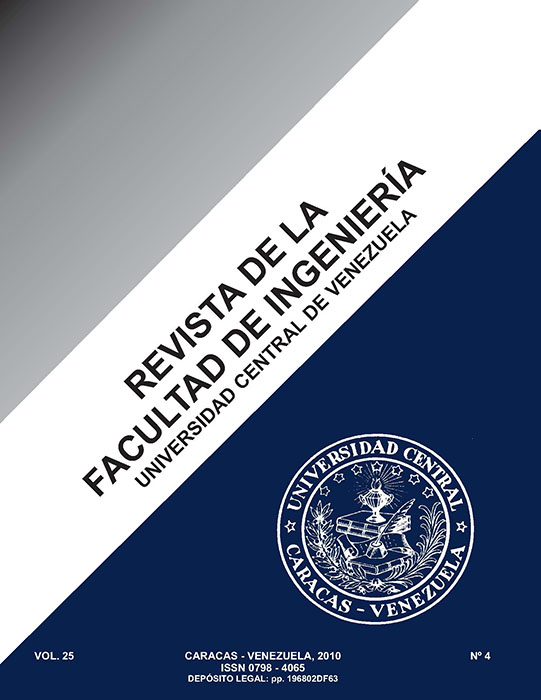INFLUENCIA DE LA RELACIÓN C:N EN LA REMOCIÓN DE NITRÓGENO USANDO UN SISTEMA COMBINADO DE REACTORES POR CARGA SECUENCIAL / Influence of C/N Ratio on the Removal of Nitrogen by Using a Combined System of Sequencial Batch Reactors
Keywords:
Biorreactores, Nitrificación, Desnitrificación, Procesos biológicos aerobio-anóxicos, Tratamiento de aguas residuales.Abstract
Este trabajo permitió evaluar la influencia de la relación C/N sobre el desempeño de un sistema de tratamiento biológico constituido por dos reactores por carga secuencial conectados en serie: un reactor de biopelícula (RCSB) acoplado con un reactor de crecimiento suspendido (RCS). El RCSB promovió la nitrificación de un líquido residual sintético de composición débil y el RCS la desnitrificación del efluente del primero. Se experimentó con tres diferentes condiciones de una fracción volumétrica de agua residual cruda (α1= 0,5; α2= 0,2 y α3= 0). Esta fracción fue usada para sobreponerse a la disminución de carbono orgánico ocurrida en el RCSB. El sistema operó por ciclos de 6 horas (4 ciclos /día), para completar el proceso de nitrificación (RCSB) y de desnitrificación (RCS). La razón C/N en el líquido afluente del RCS alcanzó 18,7; 6,99 y 7,24 mg DQO/mg NOx-N, valores asociados a cada α señalada. La formación de NO3-N en el RCSB alcanzó 91, 95 y 95% en relación con el nitrato original, para α1, α2 y α3, respectivamente. La remoción de nitrato en el RCS alcanzó 99, 77 y 76% para α1, α2 y α3, indicando un mejor proceso de desnitrificación cuando se añade carbono orgánico al sistema. La concentración de nitrato en el efluente fue 0,06; 3,57 y 3,92 mg/L para α1, α2 y α3 respectivamente, valores inferiores a la normativa nacional para cuerpos de agua.
ABSTRACT
This work permitted to evaluate the influence of C/N ratio in a biological treatment system, integrated by two sequential batch reactors, RCSB and RCS. The RCSB permitted the nitrification of the synthetic residual liquid of weak composition and then the denitrification process took place in the RCS under three different conditions of volumetric fraction (α1=0,50; α2=0,20; α3=0,00) used in order to balance the organic carbon content. The system was operated by 6 hours cycles to complete the nitrification (RCSB) and the denitrification (RCS) process. The C/N ratio in the liquid feeding the RCS was 18,7; 6,99 and 7,24 mg COD/mg NOx-N for the three α1, α2 and α3 conditions. The nitrate formation in the RCSB was 91%, 95% and 95% for α1, α2 and α3 respectively. The removal of the nitrate in the RCS reached 99%, 77% and 76% for α1, α2 and α3 respectively, indicating a better denitrification process when organic carbon is supplied to the system. The nitrate concentration in the effluent of the RCS were 0,06; 3,6 and 3,9 mg/l for α1, α2 and α3 respectively, which are much lower than the legal requirements in Venezuela.
Keywords: Bioreactors, Nitrification-denitrification, aerobic-anoxic biological process, sequential batch reactors, wastewater treatment



